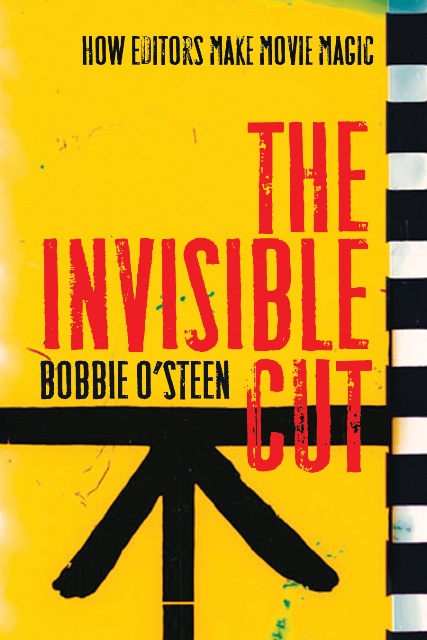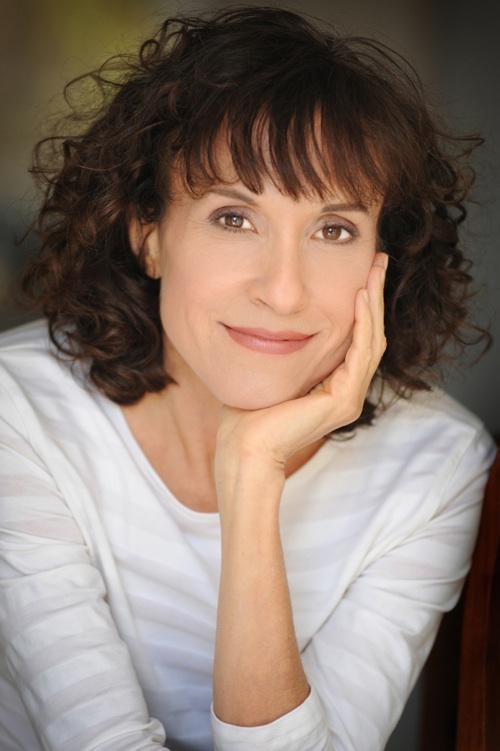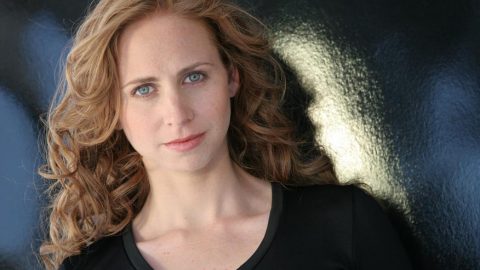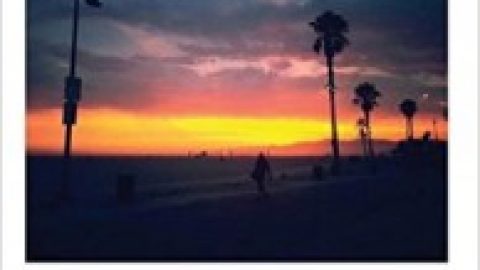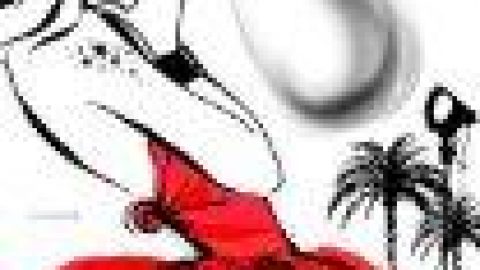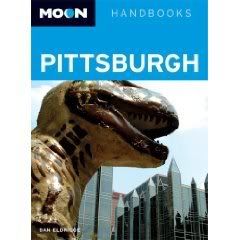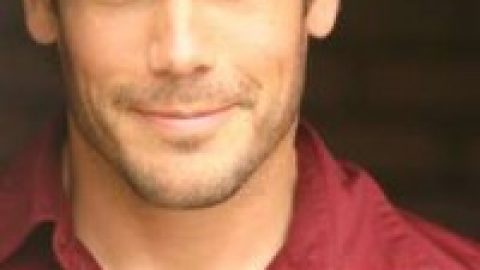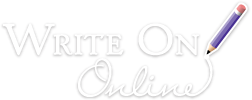Write On! speaks with film editor, screenwriter, and author Bobbie O’Steen—The Invisible Cut: How Editors Make Movie Magic. O’Steen discusses her book-writing process, the art of storytelling, the importance of following your passion, and more. O’Steen is a regular contributor to Moviemaker Magazine, MovieGeeksUnited, and EditFest LA and EditFest New York, and conducts ongoing events with well-known film editors with the intent of educating filmmakers and the film going public about “the invisible art. ”
How did growing up in the film business encourage you to pursue a career in entertainment?
My father was a film editor and as I got older I realized how fortunate he was to have a job that he felt passionately about; that it was actually a rarity to love what one does for a living. My father not only thought that editing was an endlessly intriguing puzzle, but he lived and breathed film. It was infectious.
What was your process for writing The Invisible Cut?
When I wrote Cut to the Chase—based on interviews with my late husband Sam O’Steen, about his work as a film editor—I realized that I was able to help him effectively explain a very elusive art-form. I think this was because I straddled both verbal and visual worlds, having been both an editor and writer.
Michael Wiese, the publisher of that book, then commissioned me to write “the definitive book about editing.” My intent was to pull back the curtain and explain how the mysterious art of editing is actually done in an interesting, involving way.
I started out with the premise that editors are both the seducers and magicians on a filmmaking team. They have to always be ahead of the audience, knowing what they need and want—and make them want things they’re not even aware of. They not only control the heart strings and minds of the audience, but also their eyes and ears, using sleight of hand to keep them in that magic movie bubble so they don’t notice all the problems and compromises that go into making a movie. I explained how editors use rhythm and pace to propel the story forward; how they manipulate the audience and control focus with their knowledge of such things as camera moves, sound and music. I described the evolution of editing styles and techniques as a part of film history and wrote about the crucial relationship between the editor and director, which functions much like the give and take of a marriage.
But then at some point I realized that since editing is such a visual medium, it would be very compelling to also show and tell. As a result, I created a section called “Analyzing Scenes and Their Frame Grabs,” and used 13 scenes from classic movies, each representing a different genre. Then I pulled the frame grabs of the actual cuts of those scenes and used them as a taking-off point to deconstruct the editors’ work. In some cases I used my interviews with editors (Carol Littleton for Body Heat and The Big Chill; Sam O’Steen for The Graduate and Chinatown) I also used archived interview material and extensive research for Rear Window, Twelve Angry Men, Butch Cassidy and the Sundance Kid, A Hard Day’s Night, and The French Connection to help me analyze the editor’s work.
In the end, the original material was compressed it so it represented the first fifth of the book, and “Analyzing Scenes and Their Frame Grabs” constituted the rest of the book.
What was your favorite part of writing The Invisible Cut?
Having the luxury of sitting with Carol Littleton, showing her the frame grabs of her edits, and having her specifically explain her process. She had so many surprising and enlightening stories to tell. We even ended up doing an event this January, sponsored by ACE and UCLA Film and Television Archive at the Billy Wilder Theater, where we recreated that conversation and projected those frame grabs before an audience.
The greatest challenge?
What to include and not to include. I did not want to bog the reader down with too much technical information or be too obtuse or abstract in my explanations, which is the pitfall of so many books about editing. The greatest reward for me, after the book came out, was how many established editors told me they wish they had had my book when they were starting out; that I explain certain truths about the complicated minds of editors and demystify the process.
What was your favorite filmmaking-experience?
Working with my husband Sam O’Steen as a young editor on movies such as Straight Time and Tess; standing behind him at the Moviola and observing his process. Now that editing has become digital, assistants are more removed. They are in another room with another computer and don’t get to witness the physical evidence of the editor’s working mind. Since aspiring editors no longer have the opportunity to actually watch the editor and even anticipate his or her choices I feel they are more eager than ever to learn from the masters. And that is my “mission:” to get inside the editors head and communicate that to an audience of both film students and film aficionados.
How was writing a non-fiction book similar to/different from writing a screenplay?
One similarity is that you agonize over the first page! You know you have to get the readers/audience’s attention early on and keep them involved to the very end. There is not the same kind of pressure placed on the ending, however. In a screenplay you must make the ending not only believable but emotionally satisfying and somewhat unpredictable; if the ending doesn’t work the whole movie doesn’t work. In a non-fiction book you only need to recap and summarize the purpose and essence at the end. In a screenplay the challenge is to invent a good story, but in nonfiction one has to be inventive in a different way. It’s not easy to communicate ideas and distill information so that it is compelling. Bottom line: regardless of the medium you still have to have a structure, to find a way to hold their attention and build to an interesting place—and then have them walk away feeling satisfied.
What is your process for determining key story elements when writing screenplays or other fiction and how does it relate to the editing process?
Before editors touch the film, they have to prepare themselves. They have to be very familiar with the screenplay but more importantly with what the director envisions. Once they’ve internalized the material and before they make the first cut, they must think about each scene and the intent of the whole movie. They should see the script as the blueprint with editing as the final step. The editor is, after all, the last storyteller in the filmmaking process. So at the end of the day, the editor and the screenwriter have to ask the same questions, such as:
What is the scene about? What is its overall function? Where is this scene in the trajectory of the story and in the development of the characters? Is the audience supposed to identify or like/dislike a particular character? Should that character be dominant or play a secondary role? Should the emphasis or sympathy shift to another character during the course of the scene? Are there details that need to be emphasized to reveal character or plot? Is there a surprise that has to be set up? What are the arcs in the scene and if there is more than one, which is the most powerful? How well does the scene play within the context of the movie?
What are the 3 most important lessons/tips you hope readers take from reading The Invisible Cut?
1. Tell the story in the best way possible. How do you tell an effective joke? The timing is right and you tell just enough. And if you pull the audience into the movie and keep them there, you achieve the best cuts, the ones you never see.
2. Editing is about thinking not cutting. Don’t jump the gun. Sit back and ponder your choices before you act; always cut for a reason.
3. Talent is only part of what it takes to be a good editor. You have to have empathy for the director, who relies on you to interpret what he wants. So leave your ego at the door, don’t be possessive of your work or have the need to get credit. Remember that moviemaking is a collaborative art.
Additional advice for non-fiction writers? Screenwriters? Film editors?
Trust your instincts, but always be open to suggestions or new ideas.
What do you know now that you wish you knew at the beginning of your career?
You can’t expect things to happen quickly or shortcut your way to success. Don’t be afraid to take chances; in fact if you stumble and get bruised, those are the experiences you learn the most from.
And, most important of all: If you figure out what you do best and what give you passion, the odds are you will be good at it and persevere.
Tags: Author Q&A Bobbie O'Steen Debra Eckerling EditFest Film Editing Michael Wiese Moviemaker Magazine Non-fiction Screenwriting The Invisible Cut: How Editors Make Movie Magic Write On!

